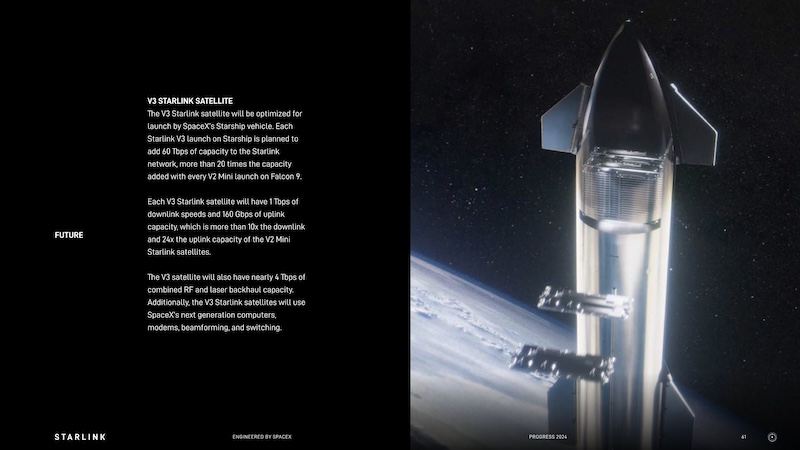SpaceX revealed specifications for their next-generation V3 Starlink satellites, setting the stage for a dramatic transformation in satellite internet capabilities. The new satellites, designed specifically for deployment via Starship, represent a massive technological leap that could reshape the landscape of global internet connectivity.
The numbers are staggering – each V3 Starlink launch aboard Starship will inject 60 Teraops of capacity into the Starlink network. This marks a twentyfold increase compared to current V2 Mini launches on Falcon 9 rockets. Such a substantial boost signals SpaceX’s commitment to scaling their space-based internet infrastructure at an unprecedented pace.
The V3 satellites pack impressive capabilities that dwarf their predecessors. Each satellite will deliver 1 Teraop of downlink speeds paired with 160 Gbps of uplink capacity. To put this in perspective, these figures represent more than 10 times the downlink and 24 times the uplink capacity of existing V2 Mini satellites.
Perhaps most impressive is the combined RF and laser backhaul capacity, approaching 4 Tbps per satellite. SpaceX has integrated next-generation computing systems, advanced modems, and sophisticated beamforming and switching capabilities into the V3 design. These improvements directly address the growing demand for reliable high-speed internet in congested network areas.
Michael Nicolls, VP of Starlink Engineering at SpaceX, emphasized the transformative potential of these satellites. “The Starlink V3 satellite will be a game changer,” he stated, highlighting their ability to “deliver gigabit connectivity to individual user terminals.” This achievement, he noted, hinges on the launch capabilities of Starship.
The introduction of V3 Starlinks marks a defining moment in satellite communications. As these advanced units begin deployment, they’ll establish new benchmarks for space-based internet performance. It seems the stars are indeed aligning for SpaceX’s vision of universal high-speed internet access.
Related Post
SpaceX Texas Starlink Terminal Manufacturing Facility in Bastrop: Makes 4.7M Terminals Per Year
SpaceX Starlink Direct to Cell Service, Video Call on X via Starlink DTC Satellites
SpaceX Seeks FCC Approval for 30,000 Starlink Satellites Gen2: Gigabit Internet Coming?
